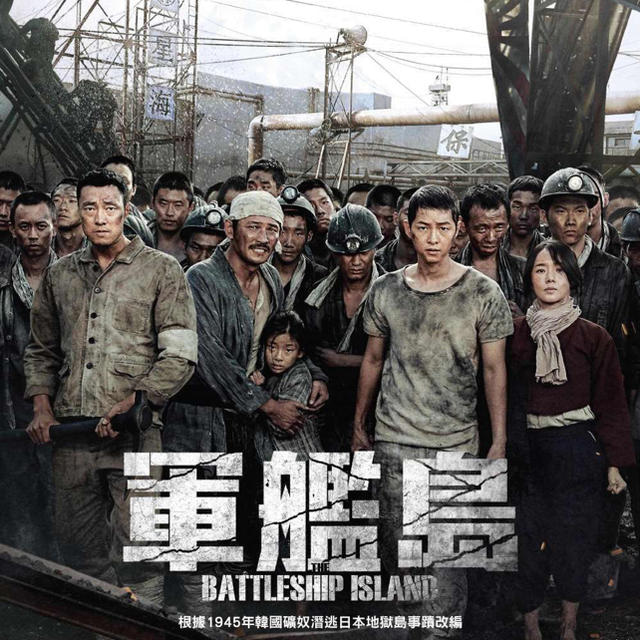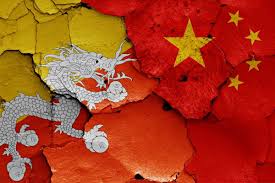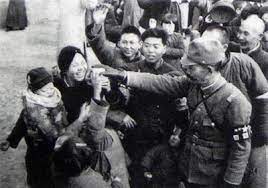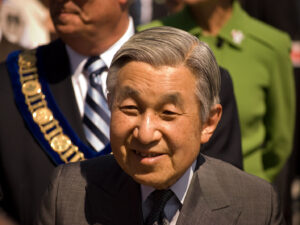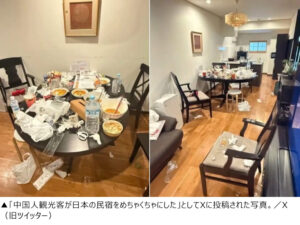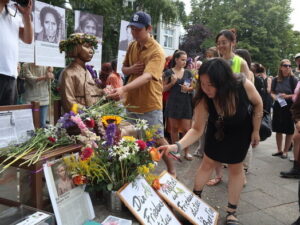The documentary film ‘Midori naki Shima’ (Island Without Greenery) broadcast by NHK about Hashima Island (Gunkanjima) in Nagasaki Prefecture has been used in anti-Japanese campaigns in South Korea as evidence of forced labor by people from the Korean Peninsula. At the end of last year, it was reported that NHK had admitted to former islanders that they had not been able to confirm that some of the footage was from the Hashima coal mine, and Chairman Nobuo Inaba said that this was “a conclusion”.
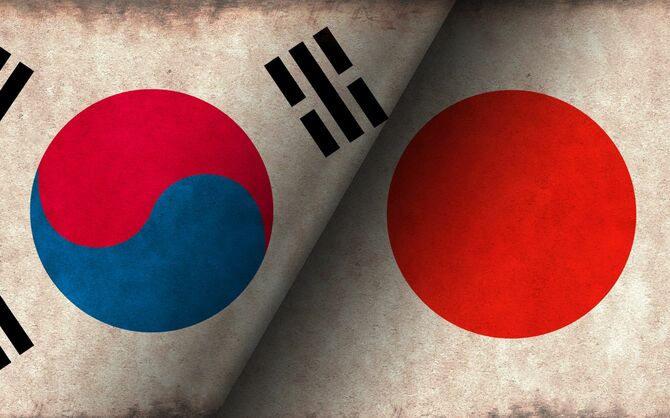
On the front page of the Sankei Shimbun on New Year’s Eve, the headline “NHK: Unable to confirm that footage is from Gunkanjima coal mine.
appeared on the front page of the Sankei Shimbun on New Year’s Eve. Nagasaki’s Hashima Island (Gunkanjima), which prospered as a coal mine, was registered as a World Heritage Site in 2015 as part of the “Industrial Heritage of Meiji Japan”. On the other hand, the island has been slandered by its neighbors due to the NHK footage, and it is said that a “mediation” has now been reached between former islanders and NHK.
The footage was misused in South Korea…
In the documentary film “The Island Without Trees”, which was broadcast by NHK in 1955, the conditions at the Hashima coal mine were shown, but the footage of the mine was clearly from a different coal mine. Nevertheless, in 2010, the footage was provided to the Korean public broadcaster KBS, and it was spread there. The footage was not only shown in the media, but was also exhibited at the “National Museum of Korean Contemporary History” in Busan, and was also “repurposed” for use in high school electronic textbooks. It has been used as evidence of the forced labor of people from the Korean Peninsula during the war on the “hell island” of poor conditions.
“Recently, former islanders who have suffered from harmful rumors in Japan established the ‘Association of Former Hashima Island Residents Pursuing the Truth of History’ in January 2005. In November 2008, they sent a ‘letter of protest and demand’ to NHK, protesting the misuse of footage that was different from the truth in South Korea, and demanding an investigation into the circumstances, as well as an apology to the former islanders” (a journalist familiar with the Hashima issue).
“I think it is very regrettable”
In response, NHK stated that the program had been produced and broadcast based on research conducted at the time on Hashima Island. After the station had conducted its own investigation, it announced its findings in December 2011, stating that it had not reached the conclusion that the footage was not from Hashima Island.
“In April 2011, NHK Chairman Inaba told the House of Councillors’ Committee on Accounts that he felt it was regrettable that former islanders felt their honor had been hurt by the fact that the footage was being shown at a facility in South Korea. However, at the same committee meeting the following month, he also said that the footage had passed the copyright protection period and that he thought there was ‘no legal basis and limited effectiveness’ in asking South Korea to stop showing it” (the journalist mentioned above).
After that, the “Association of Islanders” was unable to meet with Chairman Inaba as they had requested, so in January of last year, volunteers applied for mediation at the Tokyo Summary Court, which was granted on December 17th. This was reported at the beginning of this article.
The upper echelons of the organization were unwilling to accept an apology
According to the mediation record, NHK admits that it has not yet confirmed that the footage of “scenes where all the workers are not wearing headlamps” and “scenes where light bulbs are being used in the mine” were taken at Hashima Island. The record also includes a clause stating that the islanders demanded a moral apology from NHK, and that NHK expressed its strong regret.
Ichiro Kitaura, the lawyer representing the former islanders, said
“Until the mediation was settled, we had five rounds of correspondence with the other side. At first, the other side maintained their usual stance of ‘that’s footage of Hashima Island’, but at an early stage, we submitted a list of records from the university’s mining department and GHQ reports from before, during and after the war. We showed that we were ‘solidifying the evidence’, and from this point on, I felt that the other side’s response had changed.”
Even so,
“The biggest point of contention was over the issue of an apology. We were not asking for money or anything like that, but we were asking for a moral apology, saying ‘we’re sorry it’s taken so long’. The other side’s representatives understood what we meant, but their superiors were not willing to agree, and they approached us with a request to ‘express our strong regret’. I felt that the other side had a sense of infallibility, or that there was no mistake in what they had put out into the world.”
“Why did it take four years?”
Yoichi Nakamura, secretary general of the “Association of Islanders”, a member of the mediation applicant group,
“I’ll be 87 in two months’ time. Even if they say ‘confirmation has not been obtained’ in a roundabout way, they have effectively admitted that ‘it was not footage of Hashima Island’, so they have made their peace here. Even so, I can’t help wondering why it took four years from the initial protest. NHK’s broadcasting guidelines state that ‘opinions, complaints, etc. will be dealt with in good faith and as quickly as possible’, but that hasn’t been observed.”
When I asked the chairman Inaba about this,
he said, “Now that we have reached a settlement, I think I have made it clear that I strongly disapprove of the broadcast. I think we can now consider the matter closed.”
However, Ms. Yasuko Kato, the executive director of the National Council for Industrial Heritage, who has been supporting the former islanders, said
“In the future, there is a possibility that an ‘anti-Japanese government’ will be established in South Korea to replace the current government of President Yoon. If that happens, and that footage is used, how will NHK respond? We must keep a close eye on the situation.”
It is not the time to be making excuses.
Published in the January 16th, 2025 issue of Shukan Shincho
